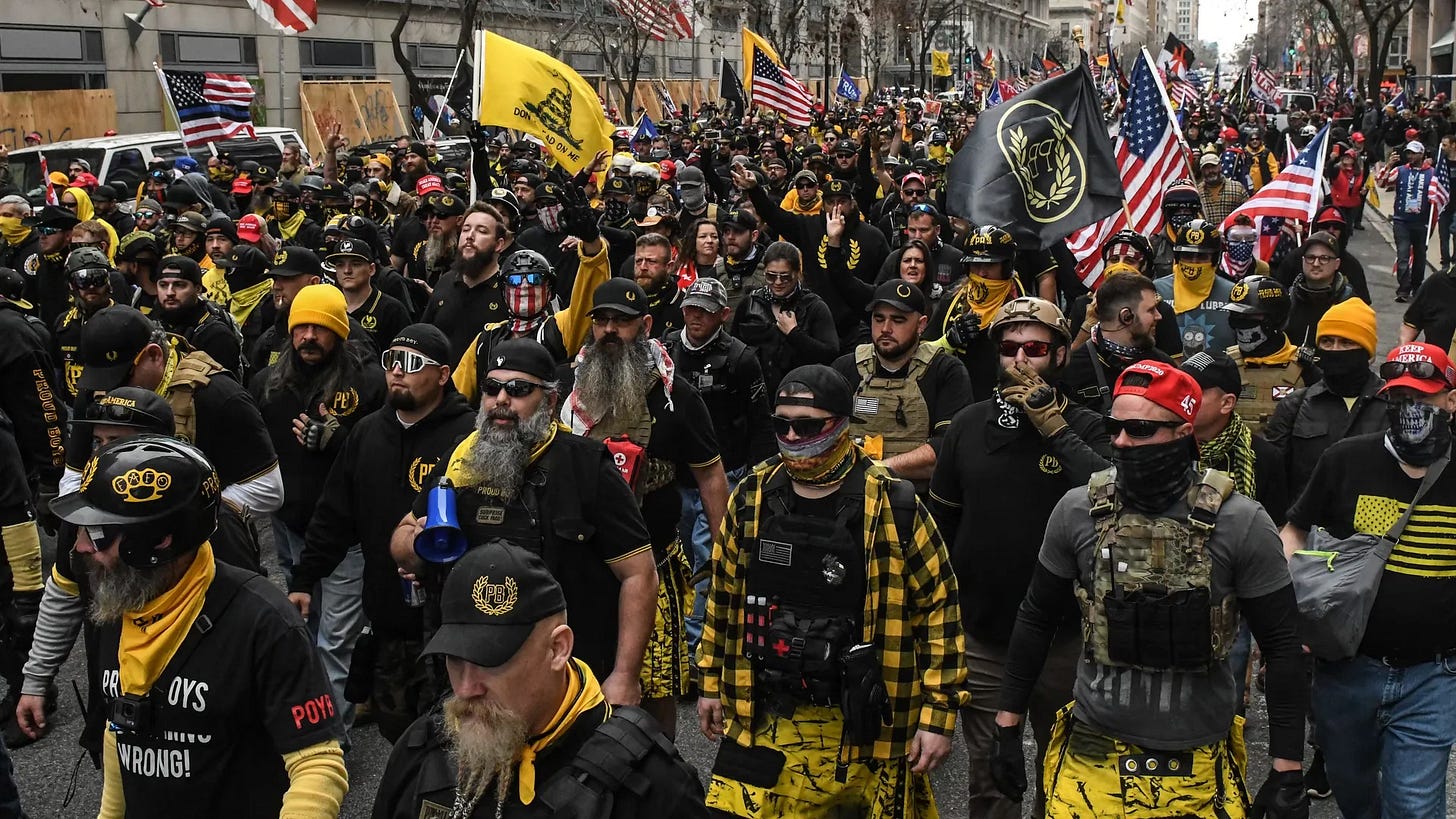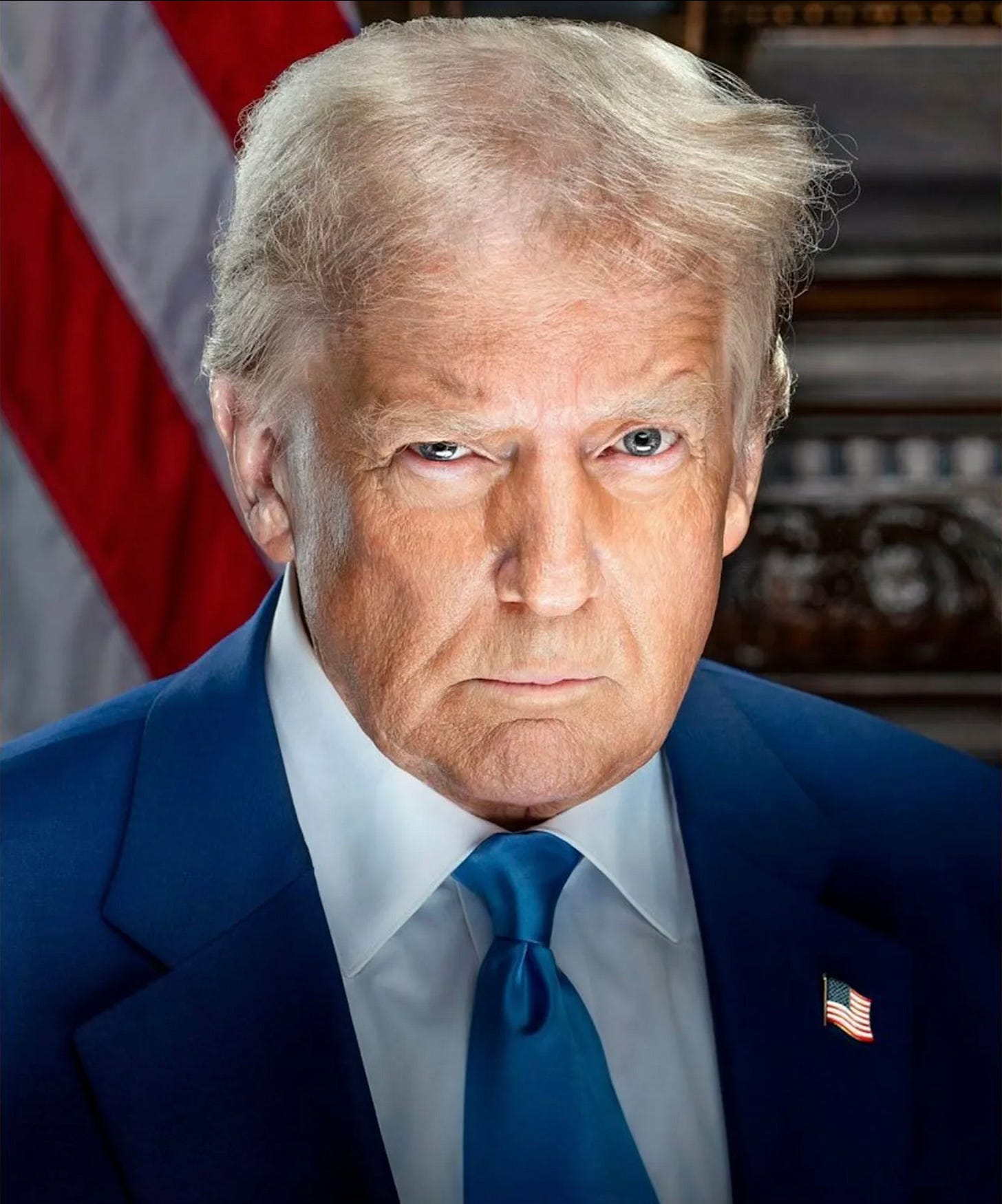It is essentially impossible to observe history uninfluenced by the present in which the observer lives. That’s often not a bad thing. The concerns and issues of the present can open new perspectives on the past. But they can also cast suspicion on judgements about history: Are those judgements truly rooted in the past or are they shaped, to one degree or another, to serve the needs of today?
That’s why the most important thing to know about Robert Paxton’s book The Anatomy of Fascism is that it was published in 2004 — when Donald Trump was a minor 1980s-era celebrity starring in a new reality TV show called The Apprentice.
At the time, fascism was not remotely a topic of public discussion. Fascism was history. Even the word had faded, at least outside far-left sorts who still hurled “fascist!” at any politician to their right.
But fascism was a hot subject among political scientists and historians, who endlessly debated a seemingly simple question: What is fascism?
It’s a much tougher question than you may think — certainly harder than “what is Communism?”
Communism has canonical texts by Karl Marx. While Communists in various countries and times tacked this way and that in pursuit of immediate political goals, Lenin, Stalin, and the rest made considerable efforts to claim their actions were always in accord with the sacred dogma. Marx gave Communism shape and form.
There is no Marx of fascism, no canonical writing, no doctrine or program. Instead, there is contempt for such intellectualism. Shortly after becoming Italy’s prime minister, Mussolini was criticized by the newspaper Il Mondo for lacking a coherent program, so he shot back, “the democrats of Il Mondo want to know our program? It is to break the bones of the democrats of Il Mondo.”
That statement is purest fascism, as I’m sure all would agree. But what makes it so?
Justice Potter Stewart famously said about pornography that he wouldn’t bother defining the word because “I know it when I see it.” That is often how people treat fascism and fascists. Academics rightly find that insufficient. So they have long tried to do more.
Some academics suggest “fascist” as an umbrella term should simply be dropped. Hitler, Franco, Salazar, and other “fascists” were too different for a single label to meaningfully apply, they argue. Mussolini’s followers were the original “fascists,” so the word should be reserved for them alone.
Others simply piled up details of regimes, ideas, and policies of those considered fascist and labelled all that complexity “fascism.” The result was more encyclopedia than definition.
Still others sought to sift through fascist thinking to identify its essence. But Mussolini’s vicious quip about breaking bones illustrates how hard it is, if not impossible, to find the essence of such an anti-intellectual movement in words.

In The Anatomy of Fascism, Paxton, an American historian renowned for his landmark history of Vichy France, did something different. “Let us instead watch fascism in action, from its beginnings to its final cataclysm,” he wrote. “When we are done, we may be able to give fascism an appropriate definition.” Paxton would draw out a definition of fascism from what fascists did, not what they said.
The Anatomy of Fascism became a classic in the literature, one of the most influential and acclaimed works in a crowded field.
But The Anatomy of Fascism — I repeat — was published in 2004. Unlike the many books and papers written on the subject over the past decade, it is untainted by suspicion that it manipulates history in order to indict a certain orange suspect.
So I’m going to repeat, verbatim, what Paxton wrote, after his lengthy review of the history of fascism in action.
First is his single-sentence definition.
Fascism may be defined as a form of political behavior marked by obsessive preoccupation with community decline, humiliation, or victimhood and by compensatory cults of unity, energy, and purity, in which a mass-based party of committed nationalist militants, working in uneasy but effective collaboration with traditional elites, abandons democratic liberties and pursues with redemptive violence and without legal or ethical restraints goals of internal cleansing and external expansion.
Following that, Paxton has a series of bullet points outlining what he calls fascism’s “mobilizing passions.”
A sense of overwhelming crisis beyond the reach of any traditional solutions;
The primacy of the group, toward which one has duties superior to every right, whether individual or universal, and the subordination of the individual to it;
The belief that one’s group is a victim, a sentiment that justifies any action, without legal or moral limits, against its enemies, both internal and external;
Dread of the group’s decline under the corrosive effective of individualistic liberalism, class conflict, and alien influences;
The need for closer integration of a purer community, by consent if possible, or by exclusionary violence if necessary;
The need for authority by natural chiefs (always male), culminating in a national chieftain who alone is capable incarnating the group’s historical destiny;
The superiority of the leader’s instincts over abstract and universal reason;
The beauty of violence and the efficacy of will, when they are devoted to a group’s success.
Readers can judge for themselves the extent to which Donald Trump and his movement can be seen in Paxton’s words.
When Trump first ran for office in 2016, Paxton and other scholars were asked if Trump was a fascist. Some said yes. Some said no.
Paxton was among those who said no.
But the January 6th insurrection changed his mind. Immediately afterward, he published a short essay explaining why.
An excerpt:
Trump's incitement of the invasion of the Capitol on January 6, 2021 removes my objection to the fascist label. His open encouragement of civic violence to overturn an election crosses a red line. The label now seems not just acceptable but necessary. It is made even more plausible by comparison with a milestone on Europe's road to fascism—an openly fascist demonstration in Paris during the night of February 6, 1934.
On that evening thousands of French veterans of World War I, bitter at rumors of corruption in a parliament already discredited by its inefficacy against the Great Depression, attempted to invade the French parliament chamber, just as the deputies were voting yet another shaky government into power. The veterans had been summoned by right-wing organizations. They made no secret of their wish to replace what they saw as a weak parliamentary government with a fascist dictatorship on the model of Hitler or Mussolini.
…
In the United States, after the ignominious failure of a shocking fascist attempt to undo Biden's election, the new American President can begin his work of healing on January 20. Despite encouraging early signs and the relative robustness of American institutions, it's too soon for a responsible historian to say whether he'll be more successful in sustaining our Republic than European leaders were in defending theirs.
That last sentence makes for painful reading today.
Last October, after Donald Trump was called a fascist by the man who had been his longest-serving chief of staff — the four-star Marine Corps general John Kelly — The York Times ran a lengthy profile of Paxton and his changed view about Trump and fascism.
From the Times:
This summer I asked Paxton if, nearly four years later, he stood by his pronouncement. Cautious but forthright, he told me that he doesn’t believe using the word is politically helpful in any way, but he confirmed the diagnosis. “It’s bubbling up from below in very worrisome ways, and that’s very much like the original fascisms,” Paxton said. “It’s the real thing. It really is.”
I agree with Robert Paxton that Trump and his movement are fascist. I also agree that it is not politically helpful to say so (thanks largely to generations of leftists who turned the word into a lazy insult.) That’s why I generally avoid calling them fascist.
Generally. But not always.
As Paxton noted in The Anatomy of Fascism, a “radical instrumentalization of truth” is a routine feature of fascism. To the fascist, truth is contingent. What is good for the fascist is true; what is not, is not.
Does that remind you of anyone?
This “radical instrumentalization of truth” makes standing and stating a truth regardless of political expedience an anti-fascist act.
And that is why, despite believing it is not politically useful to call Trump fascist, I sometimes do.
It is my small way of insisting the fascists will not win.




Thanks indeed for this. I have several friends who think we are overreacting. This worries me. I am in Paris right now and the feeling here among many is that we are in so many ways back to 1933. It is scary. Even Trump’s firing of the Kennedy Centre for the Arts chair and putting himself in as chair is a reference to how the arts were controlled during the Nazi era. I shudder. Glad to see Bernie Sanders, AOC, and Tim Walz initiating tours to red state town halls. This needs to be outed - and known for what it is.
Until we have a better name for the current kind of evil that takes root in society and politics, “fascism” will do. You’re right Dan: “truth is contingent” in America now.